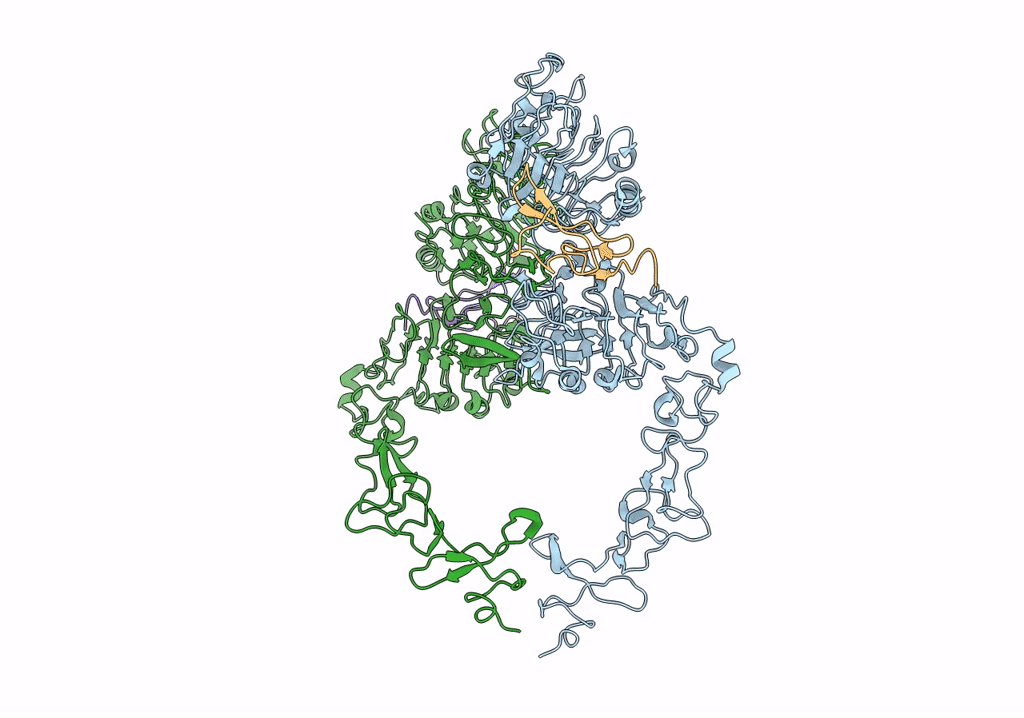
Deposition Date
2021-11-25
Release Date
2021-12-22
Last Version Date
2024-11-06
Entry Detail
PDB ID:
7SZ0
Keywords:
Title:
Cryo-EM structure of the extracellular module of the full-length EGFR L834R bound to EGF. "tips-juxtaposed" conformation
Biological Source:
Source Organism:
Homo sapiens (Taxon ID: 9606)
Host Organism:
Method Details:
Experimental Method:
Resolution:
3.30 Å
Aggregation State:
PARTICLE
Reconstruction Method:
SINGLE PARTICLE


